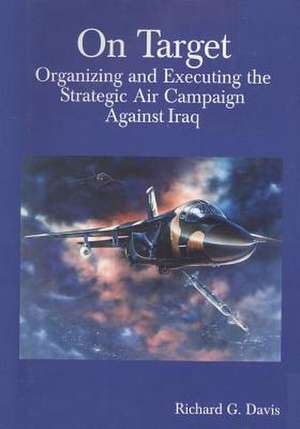On Target
Autor Office of Air Force History, Us Air Forceen Limba Engleză Paperback
Preț: 155.55 lei
Nou
Puncte Express: 233
Preț estimativ în valută:
29.77€ • 30.96$ • 24.58£
29.77€ • 30.96$ • 24.58£
Carte disponibilă
Livrare economică 25 martie-08 aprilie
Preluare comenzi: 021 569.72.76
Specificații
ISBN-13: 9781508644101
ISBN-10: 1508644101
Pagini: 400
Dimensiuni: 178 x 254 x 21 mm
Greutate: 0.69 kg
Editura: CREATESPACE
ISBN-10: 1508644101
Pagini: 400
Dimensiuni: 178 x 254 x 21 mm
Greutate: 0.69 kg
Editura: CREATESPACE
